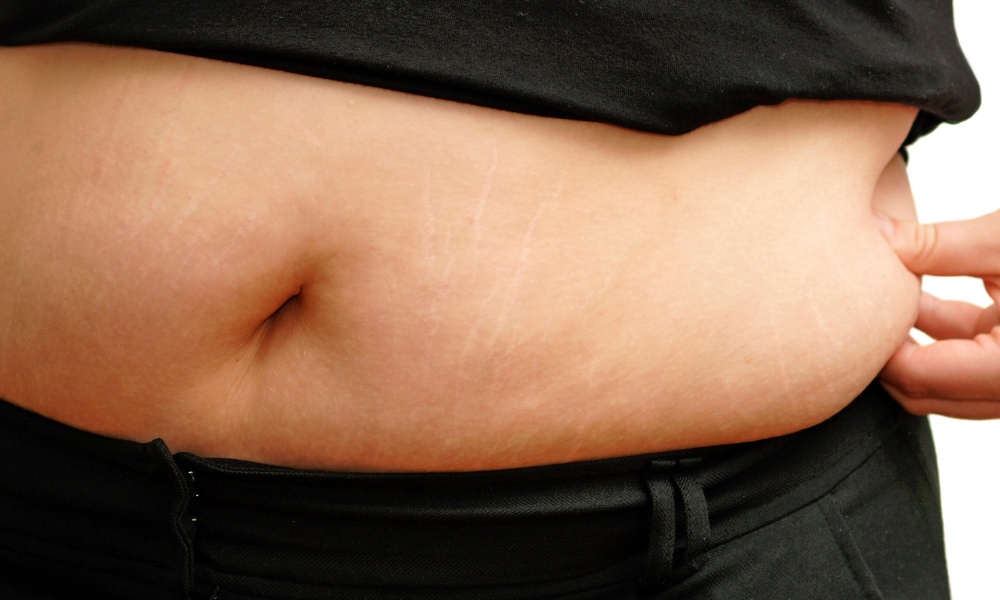Cow’s milk is an important source of vitamin D for young children. But too much cow’s milk can cause iron deficiency. How much milk is enough? How much is too much? Vitamin D and iron are two important nutrients that affect a child’s general health, growth and development. A recent Canadian study addressed the question of how best to balance the good effect milk has on Vitamin D levels and the bad effects it has on iron, and came up with the answer.
Vitamin D is necessary for absorption and maintenance of calcium and phosphorus in bones, and a deficiency of vitamin D can lead to rickets, the softening and bowing of some bones. Vitamin D may also play a role in the prevention of some chronic diseases, including those of the immune, respiratory, and cardiovascular systems. While there are a few food sources of Vitamin D including oily fish, beef liver, cheese, egg yolks, and some mushrooms, for most toddlers and young children vitamin D fortified milk is the primary nutritional source.
Vitamin D is measured by a blood test, 25 hydroxyvitamin D. In the U.S. the recommended 25 hydroxyvitamin D level is above 50 nmol/L, whereas the Canadian Pediatric Society has suggested a higher level of >75 nmol/L using data for adults.
Cow’s milk decreases the absorption of iron from other foods and can also irritate the lining of the intestine, causing small amounts of bleeding and the gradual loss of iron.
Iron is necessary to prevent the most common kind of anemia, iron deficiency anemia. But even before anemia develops, low iron stores can cause problems with early brain development. Low iron has been associated with permanent impairments in thinking and reasoning skills, as well as movement and coordination. Iron stores are measured by a blood test called serum ferritin. Normal values vary by age and sex. Nutritional sources of iron include meat, shellfish, legumes, iron-rich fruits and vegetables, and iron-fortified cereals. When eaten at the same time as iron-containing foods, fruits rich in vitamin C help iron absorption.
Cow’s milk, a major dietary component for young children, presents a nutritional dilemma. Although cow’s milk is an important source of Vitamin D, it is low in iron and it can cause iron deficiency in young children. Cow’s milk decreases the absorption of iron from other foods and can also irritate the lining of the intestine, causing small amounts of bleeding and the gradual loss of iron in the stool. It can also contribute to iron deficiency because when kids drink a lot of cow’s milk they often don’t eat other iron rich foods.
The study looked at the milk drinking habits of 1311 two- to five-year-olds for two years to determine how cow’s milk intake affected their vitamin D and ferritin levels, and what other factors in a child’s health history impacted these nutrients. Children were excluded if they had chronic illnesses, were born prematurely before 32 weeks, or were on medications which would affect their vitamin or iron metabolism.
To isolate the effect of Vitamin D in milk, the researchers collected data on the children’s daily cow’s milk consumption, their use of vitamin D or iron supplements, the amount of time children spent outdoors exposed to the sun and their use of bottles. They measured their vitamin D (25 hydroxyvitamin D) levels and their iron (serum ferritin) levels. In the study group, the average cow’s milk intake was 460 cc (about two eight ounce cups) per day. Their average vitamin D level was 88 nmol/L and their average ferritin level was 39ug.
Among children using a bottle, drinking cow's milk not only did not increase vitamin D, it also resulted in more dramatic decreases in iron. Why?
The University of Toronto researchers found that among children not using a bottle, cow’s milk did indeed increase the vitamin D level and decrease the iron level. Specifically, each cup of cow’s milk increased the vitamin D level by 6.5 % and decreased iron (serum ferritin) by 3.6%. Several other factors raised Vitamin D levels. Children who received vitamin D supplements were obviously higher in D. Children with light skin pigmentation absorbed more vitamin D from the sun and had higher levels. The summer season also played a role — more sun, more vitamin. Finally, children with a lower body mass typically had higher levels of vitamin D.
Interestingly, among children using a bottle, drinking cow's milk not only did not increase mean vitamin D, it also resulted in more dramatic decreases in iron. In other words, the children who drank their cow’s milk from a bottle did not benefit with higher vitamin D levels and suffered from lower iron levels than their peers who drank from a cup.
There are several possible explanations for this discrepancy. It may be that parents underreported the amount of milk that was consumed by bottle users, or that the children drank fluids other than milk such as juice in the bottle that do not contribute to vitamin D stores and may contribute to decreases in serum ferritin. Additionally, researchers suggested that any fluid consumed in a bottle could replace vitamin D- and iron-containing solid foods. The bottom line is that cow’s milk consumption among children using a bottle appears to have little benefit for micronutrient stores, suggesting that cups, not bottles, should be used in this age group.
As children increase their milk intake in a cup, there is a tradeoff between increasing vitamin D levels (good) and decreasing serum ferritin (bad). The study found that the tradeoff was significantly affected by bottle use, season, vitamin D supplementation, skin pigmentation and Body Mass Index (BMI).
During the winter, when sunlight provides less Vitamin D, children with darker skin pigmentation will need vitamin D supplementation.
The happy medium for most children was about two cups of cow’s milk per day. This was sufficient to maintain vitamin D above recommended levels without negatively impacting iron stores. But during the winter, when sunlight provides less Vitamin D, children with darker skin pigmentation will need vitamin D supplementation. At this time of year they required 3 to 4 cups of cow’s milk per day to maintain that vitamin D level and this, unfortunately, lowered their serum iron. For these children, it is recommended to provide two cups of cow’s milk per day, and supplement with vitamin D rather than increasing milk intake and possibly causing a lower iron level.
Parents may wish to discuss their children’s eating and drinking habits with their health care providers to optimize their children's intake of these essential micronutrients, vitamin D and iron. Parents should not begin supplementation with vitamins or minerals without discussing it with their doctors.




